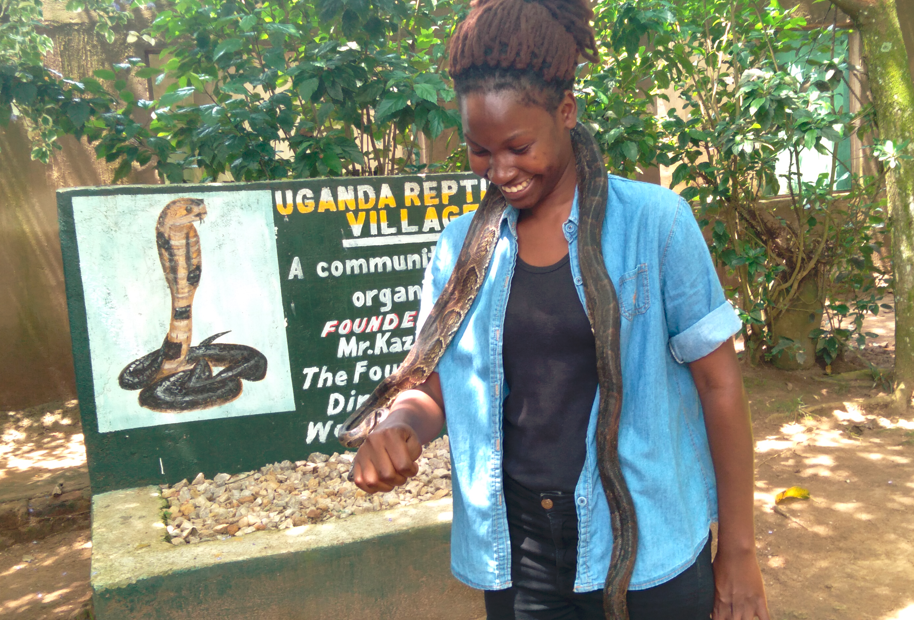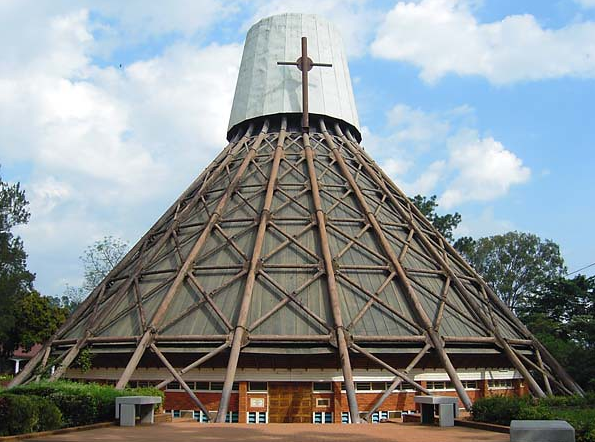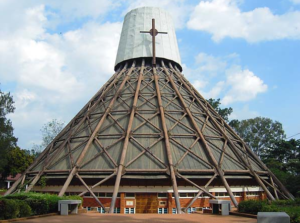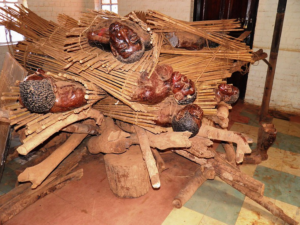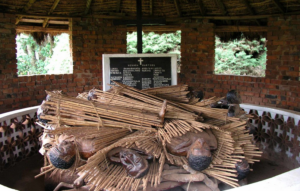The Reptiles Village in Uganda
The Reptiles Village in Uganda : is generally one of the fun and most exciting places to visit while on Entebbe city tour ranking it one of Entebbe’s popular attractions. It is located north of Entebbe in Bunono village just a short drive from Abaita Ababiri along Entebbe–Kampala highway. This is also one of the best places for tourists with snake phobia since it will not only blow your mind but also take away your fears. Also known as the snake park, this reptile village is basically a home to over 20 reptile species. The Uganda reptile village also educates about the importance of many other natural resources such as swamps, water bodies and forests which are important in saving these threatened reptiles.
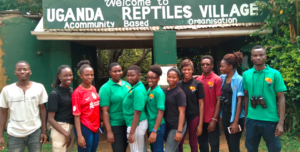 Background
Background
The place was established in the year 2002 by a Ugandan called Yasin Kazibwe. He was formerly a speed boat captain however, had good knowledge about reptiles and a passion of saving them. The reason to its establishment was to sensitize and educate the community about the importance of wildlife. Thereby, teaching them how to protect and conserve the reptiles and their importance to the future generation. He sought permission to start a reptile project which was approved under government community-based poverty eradication project.
Furthermore, he has published different documents about reptiles including a book titled snake bite. The reptiles village is a home to approximately 50 reptile species with 20 species on the display in the premises of this village. In fact, some of the reptiles in the village were rescued from harm’s way and given a safe home for them to stay. Some of the reptiles here include; Forest cobra, Gabon viper, tortoises, Nile monitor, Leopard tortoise. Jackson’s chameleon, boom slangs, Cobras, skinks, African rock python, Monitor lizards, Mambas, Viper lizards, puff adders, etc.
What to do at the Reptile village
Today, the Uganda reptile village is flooded with people such as animal researcher’s and students who love and are interested in reptiles. This is due to the fact that it is the first haven for conservation of reptiles in the country. This is one of the unique areas in Uganda where you have a chance to see the care takers play a round with snakes that you would not expect to be friendly. Regardless of how poisonous some of these reptiles are, they know how to handle them, making it a unique experience.
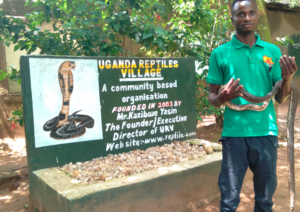 You will also get a golden opportunity of lifting the African python snake. However, it’s done in the presence of a well-trained supervisor. The reptile village has got other attractions such as the two basins; one with different tortoise species and the other with non-climbing reptile species. There is also a point where you will be able to watch camouflaging chameleons. It also consists of a swamp that is a habitat to many other reptiles and primates. These include; the blue monkeys, vervet monkeys not to mention but a few. The swamp also hosts a number of birds for bird lovers. It also harbors different fish species thereby leading to sport fishing as one of the activities here. Canoeing as well is one of the activities that you should not miss out when you visit this place.
You will also get a golden opportunity of lifting the African python snake. However, it’s done in the presence of a well-trained supervisor. The reptile village has got other attractions such as the two basins; one with different tortoise species and the other with non-climbing reptile species. There is also a point where you will be able to watch camouflaging chameleons. It also consists of a swamp that is a habitat to many other reptiles and primates. These include; the blue monkeys, vervet monkeys not to mention but a few. The swamp also hosts a number of birds for bird lovers. It also harbors different fish species thereby leading to sport fishing as one of the activities here. Canoeing as well is one of the activities that you should not miss out when you visit this place.
How to get there
The reptiles village can be accessed 4 kilometers off the Kampala–Entebbe highway. The entry fee to this place is affordable. However, tourists who would like to join the conservation can donate in the box within this place. It is open to visitors 7 days a week from 8am to 6pm including public holidays. There are various accommodation within Entebbe where tourists can sleep and they vary from budget, mid-range and luxurious accommodation.

